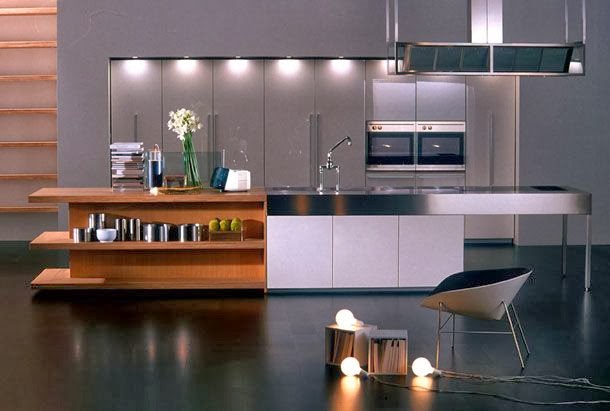Creating a minimalist house involves simplifying your living space, decluttering, and focusing on essential elements to achieve a clean and uncluttered aesthetic. Here are several tips for achieving a minimalist house:
Declutter: Start by removing unnecessary items from your home. Be ruthless in your approach, and only keep things that are essential or hold sentimental value. Donate or sell items you no longer need.
- Choose a neutral color palette: Stick to a neutral color scheme, such as whites, grays, blacks, and earth tones. These colors create a serene and uncluttered atmosphere.
- Keep furniture simple: Select furniture with clean lines and minimalistic designs. Avoid overly ornate or bulky pieces. Multi-functional furniture can help save space in a minimalist home.
- Limit decorations: Keep decorations to a minimum. Choose a few well-placed, high-quality decor items that add character to your space. Avoid cluttering shelves and surfaces.
- Open spaces: Create open, airy spaces by leaving plenty of empty floor and wall space. Avoid overcrowding rooms with furniture and decor.
- Storage solutions: Invest in hidden or built-in storage solutions to keep items out of sight. This can help maintain a clean and uncluttered appearance.
- Organize with intention: Everything you own should have a designated place. Implement organization systems, like drawers, cabinets, and storage bins, to keep your belongings organized.
- Natural light: Maximize natural light by using light, sheer window treatments. This not only makes your space feel brighter but also contributes to the minimalist aesthetic.
- Reduce technology clutter: Tuck away cords and cables, and limit the number of electronic gadgets and screens in your living space. Consider wireless and smart home solutions to reduce visual distractions.
- Quality over quantity: Invest in high-quality, durable items rather than accumulating numerous low-quality possessions. Quality items often have a timeless design that complements a minimalist look.
- Empty surfaces: Keep surfaces like countertops, tables, and desks clear of clutter. Only display a few essential items, such as a potted plant or a single decorative piece.
- Limit wall art: Choose a few pieces of art or wall decor that have personal significance or contribute to the overall aesthetic. Avoid filling every wall with artwork.
- Functional minimalism: Prioritize functionality in your choices. If an item doesn't serve a purpose or enhance your daily life, consider whether it's necessary.
- Clear pathways: Ensure there are clear and unobstructed pathways throughout your home. Avoid placing furniture or decor in a way that obstructs movement.
- Regular maintenance: Regularly review your possessions and declutter as needed. A minimalist home requires ongoing attention to keep clutter at bay.
Remember that minimalism is not just about aesthetics; it's also a lifestyle that promotes simplicity and mindfulness. It can lead to reduced stress, increased focus, and a greater sense of well-being in your home.
Tips for minimalist living room
A minimalist living room is characterized by simplicity, clean lines, and a focus on essential elements. It's a space where clutter is kept to a minimum, allowing for a serene and uncluttered atmosphere. Here are some tips for creating a minimalist living room:
Declutter: Start by decluttering your living room. Remove items that are unnecessary, outdated, or no longer serve a purpose. Keep only what is essential and has value to you.
Neutral Color Palette: Choose a neutral color scheme for your walls, furniture, and decor. Whites, grays, blacks, and earth tones are popular choices. Neutral colors create a sense of calm and simplicity.
Simple Furniture: Select furniture with clean lines and minimalistic designs. Avoid bulky or ornate pieces. Multi-functional furniture can be a great choice to maximize space.
Limited Decor: Keep decorations to a minimum. Choose a few high-quality decor items that align with your style. A single statement piece, like a large piece of art or a stylish rug, can serve as a focal point.
Open Space: Create open and airy spaces by leaving plenty of empty floor and wall space. Avoid overcrowding the room with furniture.
Hidden Storage: Invest in furniture with built-in storage solutions or add hidden storage, like cabinets and drawers, to keep items out of sight.
Functional Layout: Arrange furniture with functionality in mind. Ensure that seating is comfortable and conducive to conversation. Avoid blocking natural traffic flow.
Lighting: Use natural light as much as possible. Choose light, sheer window treatments that allow sunlight to filter in. Minimalist light fixtures, such as pendant lights, can complement the overall aesthetic.
Quality over Quantity: Prioritize quality over quantity when it comes to furniture and decor. High-quality, durable items often have a timeless design that contributes to a minimalist look.
Empty Surfaces: Keep tabletops, shelves, and other surfaces clear of clutter. Only display a few essential items, like a vase of fresh flowers or a piece of minimalist decor.
Monochromatic Accents: If you want to add color to your minimalist living room, consider using monochromatic or muted color accents to maintain a cohesive and understated look.
Minimal Electronics: Tuck away cords and cables, and limit the number of electronic gadgets in your living room. Consider wireless and smart home solutions to reduce visual distractions.
Regular Maintenance: Regularly review and declutter your living room to prevent clutter from accumulating. A minimalist living room requires ongoing attention to maintain its simplicity.
Remember that the essence of a minimalist living room is to create a serene and clutter-free space that promotes relaxation and focus. Tailor the design to your preferences and lifestyle, but always aim for simplicity and functionality.

Comments
Post a Comment